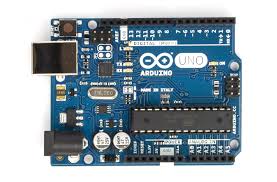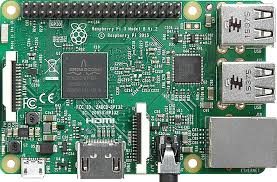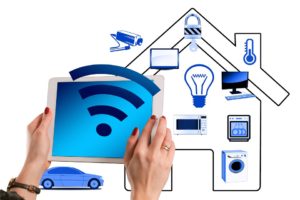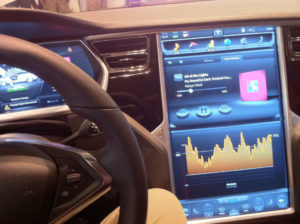Introduction
Embedded Systems
Embedded systems are computers that are built within other devices to perform a single specific task within a larger electrical or mechanical system. Embedded computers use usually micro-controller devices, such as the Raspberry Pi or Arduino, and are often used ‘headless’ – the device operates without a monitor / mouse / keyboard. Embedded systems usually come with operating systems pre-installed, often on ROM memory chips, rather than HDD Drives.


Characteristics
Characteristics of embedded systems
Embedded systems are:
- Used to perform a single functions within a larger device.
- Usually low power
- low processor speed devices.
- Limited resources (e.g. RAM)
- Generally do not have a separate Hard Drive but rely solely on Flash Memory.
- Mass produced, low cost per device.
- Smaller than a normal computer.
- Large operating temperature ranges.
- More rugged than general purpose computers.
Smart Homes
Smart Homes
- Smart Home embedded devices
- Smart homes contain a number of embedded systems.
- Smart Assistants
- Smart Security systems
- Smart Heating
- Smart Tvs
What makes all these devices ‘smart’ is that they:
- Have a computer inside them
- Are usually connected to the internet or LAN network.
Weather
Weather Stations
A popular use of embedded systems is in weather systems. Modern weather modelling and forecasting systems require huge amounts of data from all over the world to make their predictions. Embedded devices provide a highly effective, portable and cheap solution.
These can consist of:
- Weather Buoys in the Ocean measuring air pressure, water temperature
- Fixed weather stations in remote areas (mountains, deserts, etc) measuring wind speed, rainfall, pressure, temperature, pollution.
- Weather balloons
Advantages of embedded weather devices
- Very cheap to buy and operate
- Can record a large amount of data on a regular basis
- Can transmit recorded data on a regular basis.
Embedded weather devices usually use low power processors, which allow the devices to be powered by batteries, with solar panels used to keep the devices powered for weeks or months on end without human intervention.
Cars
Embedded Systems in Cars
These provide fully connected smart systems to:
- Lock / Unlock the car
- Integrated navigation systems
- Driving monitoring for insurance and monitoring purposes
- Connect smartphones for hands free
Advantages
The embedded devices, together with the internet connected remote apps that work with them allow for a number of useful features, including:
- Defrosting the car in the morning before you get it.
- Cheaper insurance for good drivers
Disadvantages
Embedded devices mean that cars can be hacked remotely, with the possibility of:
- Your car being stolen due to remote unlocking
- You car being controlled and driven remotely by criminals / terrorists.
- Your lender disabling your car due to non-payment of loans.
Video
Firmware & ROM
Firmware and ROM
Many embedded devices do not contain separate HDD or SSD drive containing the operating system. Instead the operating system is installed on a ROM chip in the form of firmware. Since embedded devices are usually single purpose devices, new software or software updates usually do not need to be installed. This makes embedded systems very reliable.
Resources


